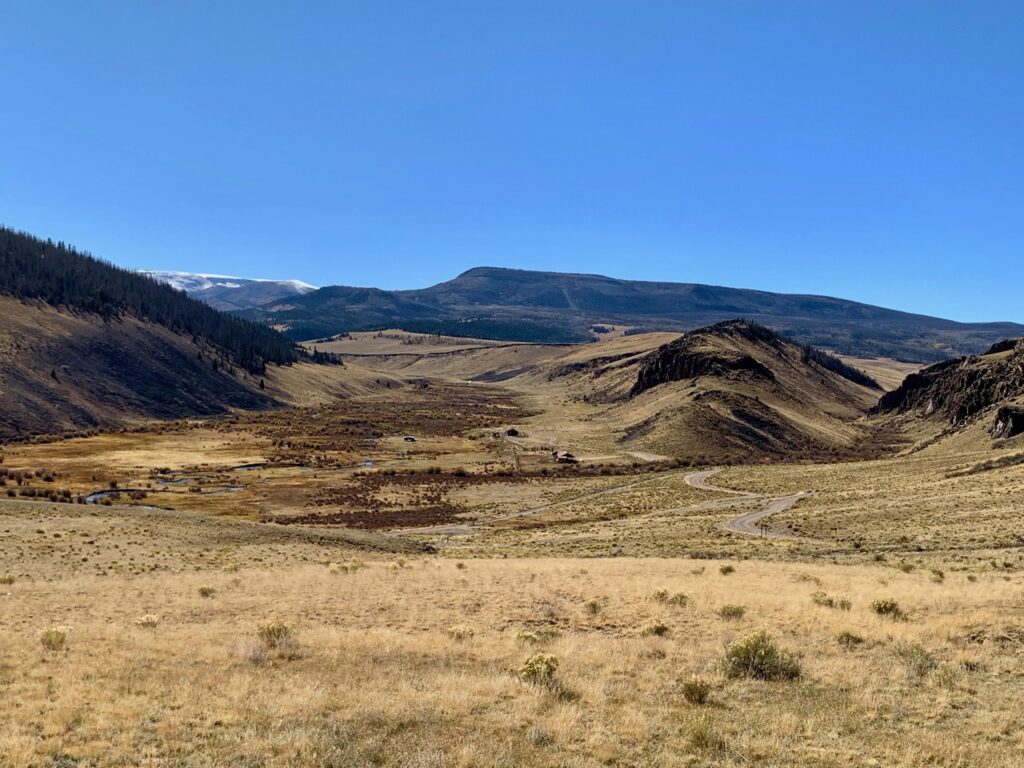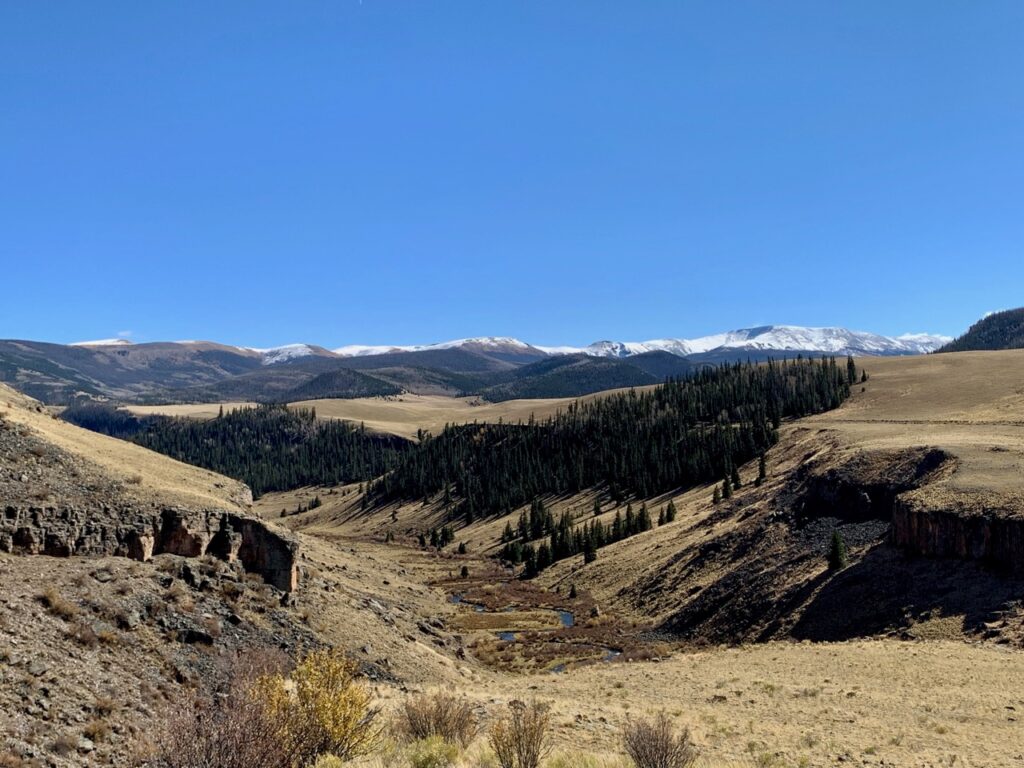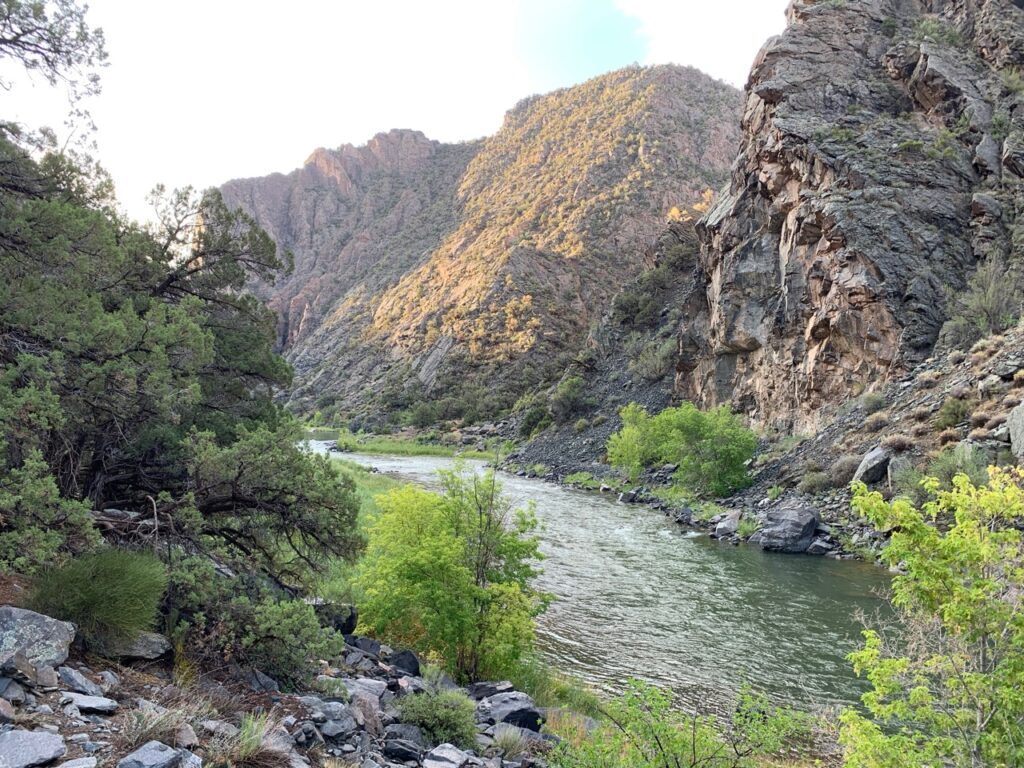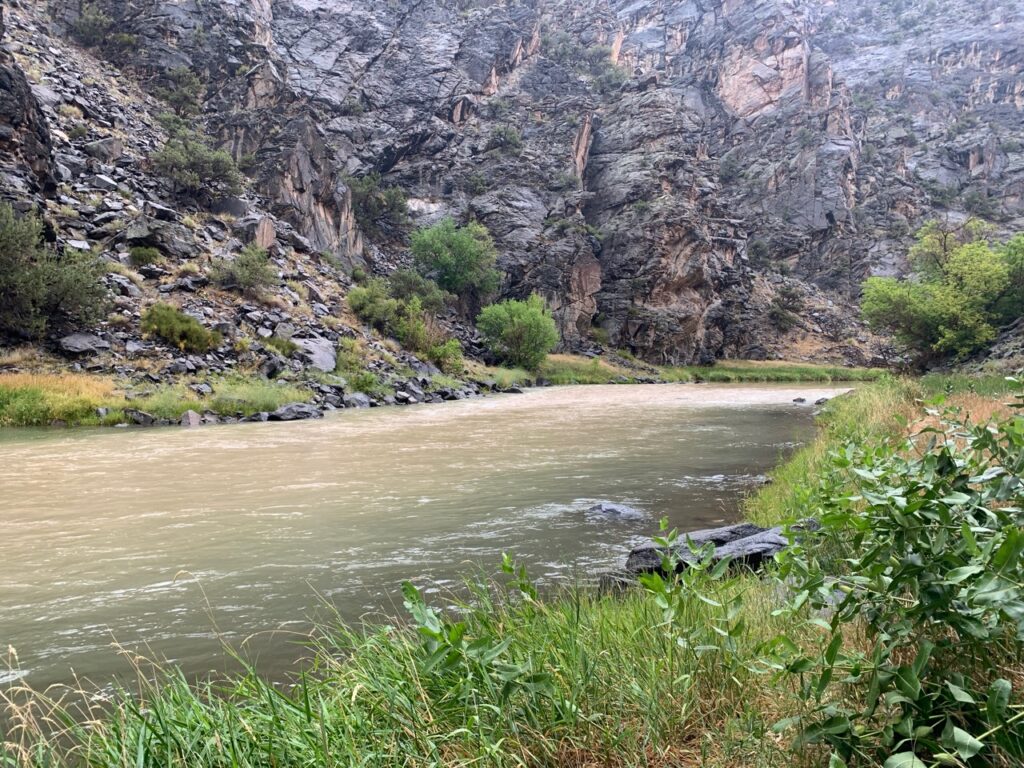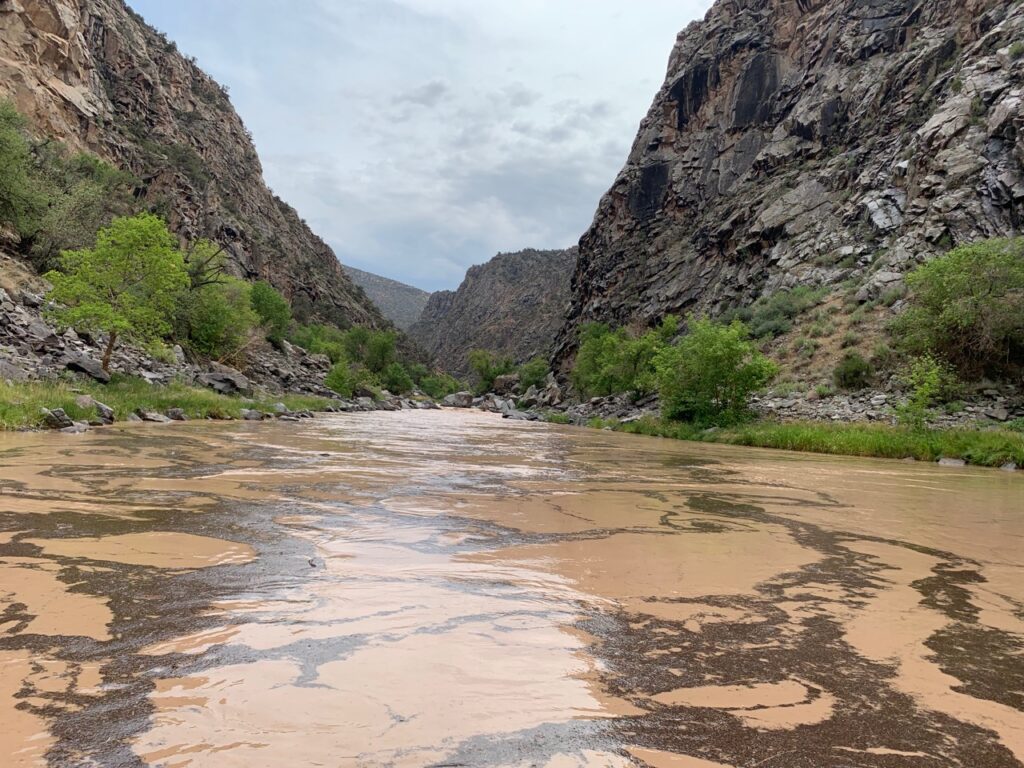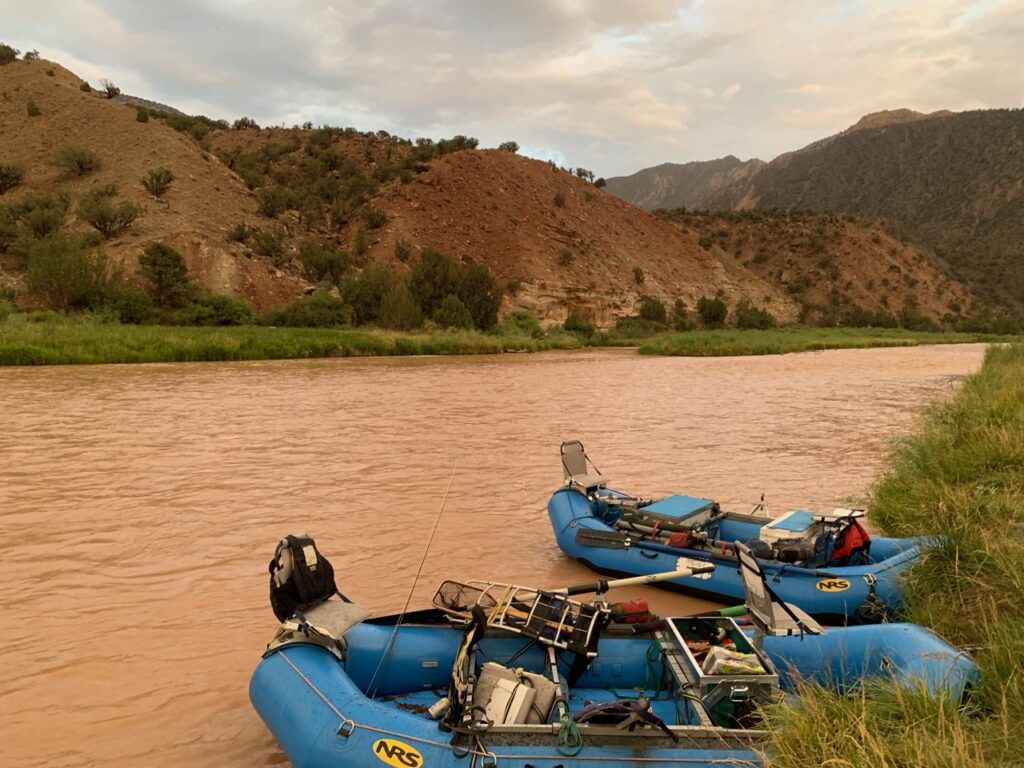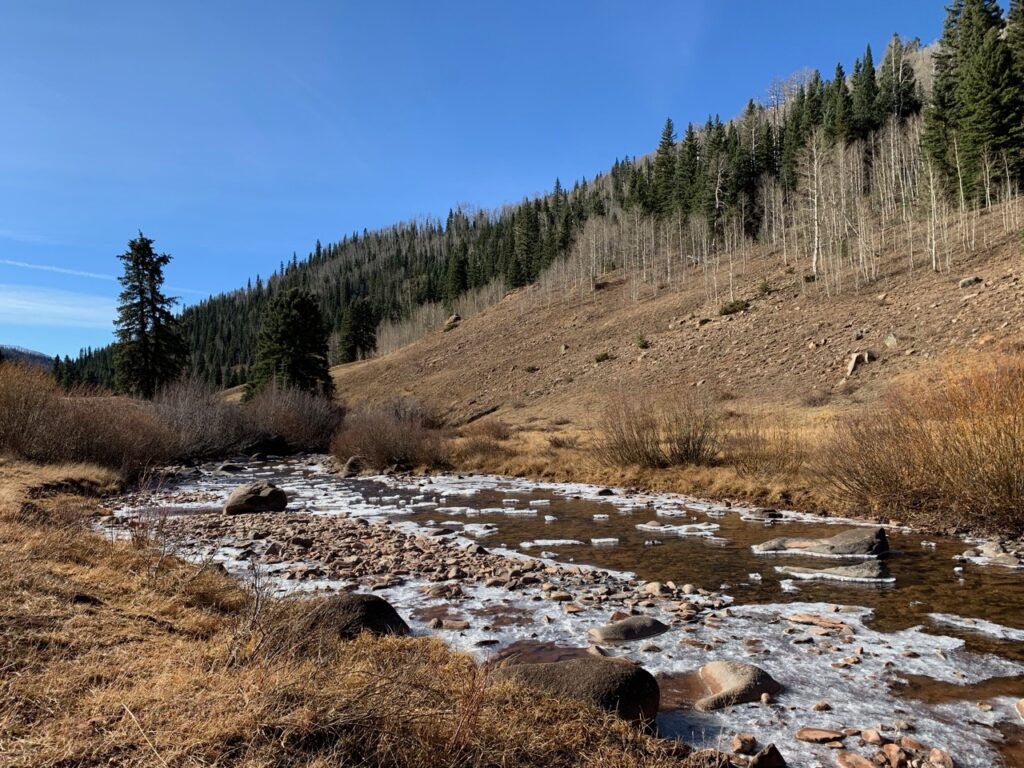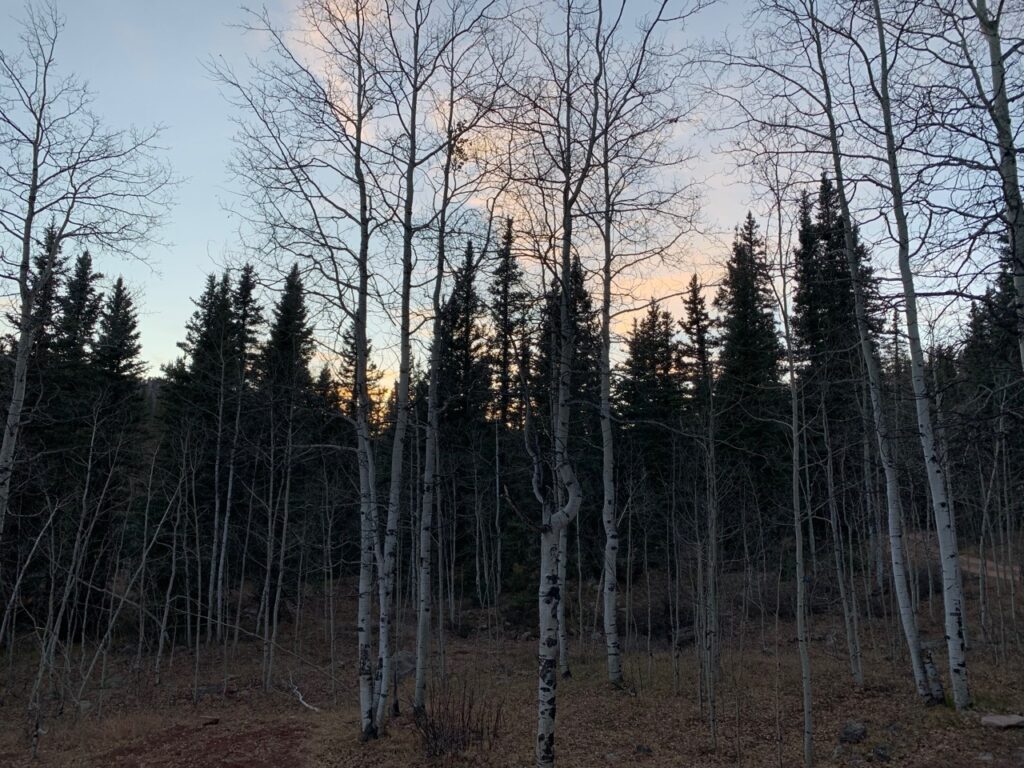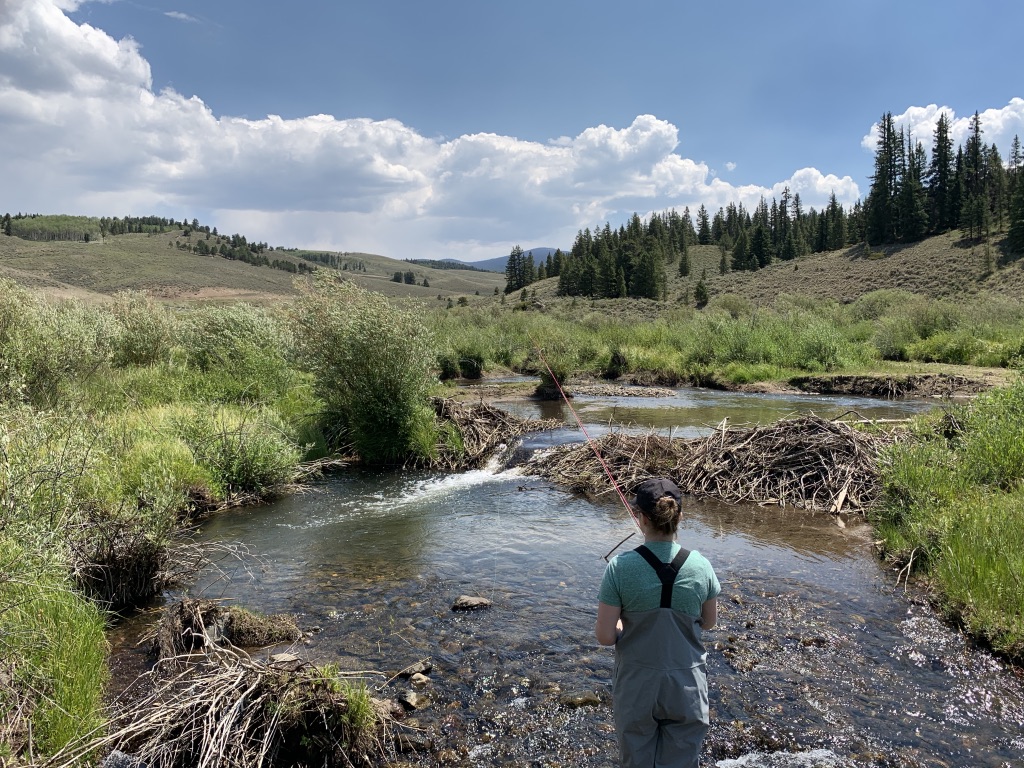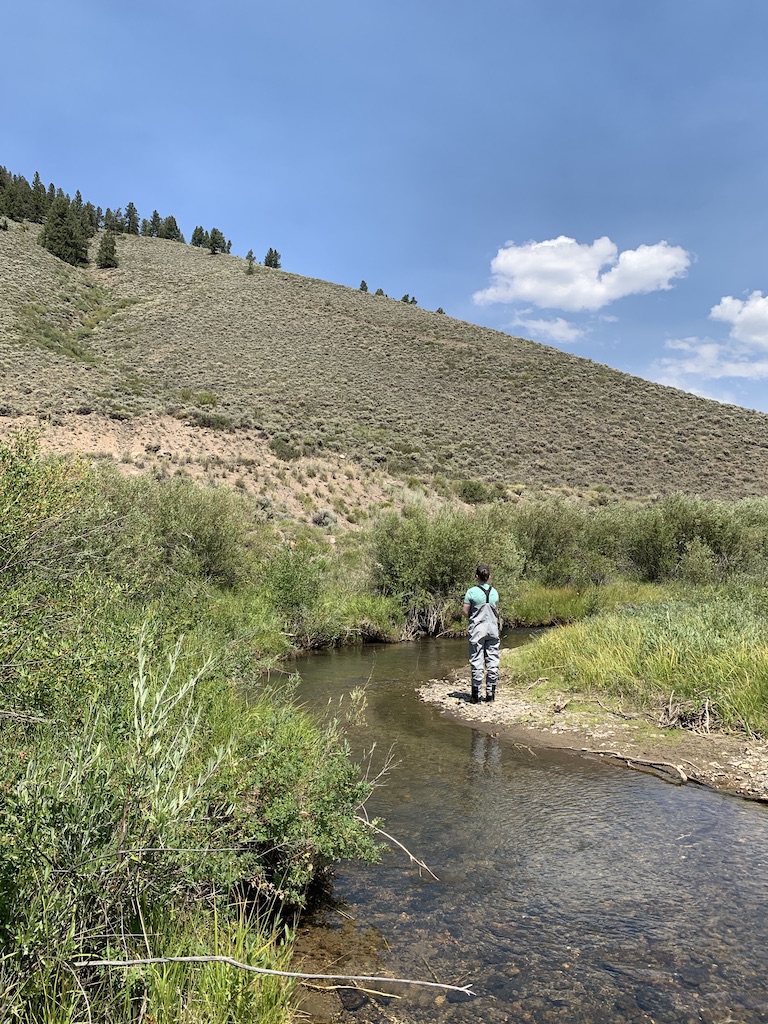“Oh yeah dude, they’ll be sipping off the top for sure,” the twenty-something behind the fly shop counter enthused. His buddy nodded.
“Yeah, totally. Sipping for sure.”
Shuttle arranged and following their directions, we drove the short distance to the boat ramp on the edge of town, the last traces of cool leaving the blue and gold of a Montana morning. Several vehicles were already parked in the lot. Three drift boats sat at anchor against the shore immediately downstream of the ramp, their occupants engaged in last minute rigging and stowing.

“Let’s launch and hang out upstream till these guys clear out,” suggested Cave. Boat launched, we rowed a short distance upstream and dropped anchor, thirty yards below where a concrete bridge spanned the river. It seemed like a good time to open the beer cooler. Already, there were fish rising just below the bridge, and out toward the middle of the river in a barely discernible eddy line coming off one of the bridge supports.
“Give ‘em a go, mate,” Cave suggested.
I eyed the risers warily. Bridge fish tend to be smart fish. Every tourist and his dog has probably thrown a fly at them already this summer. They’ve likely seen every bad drift and poorly presented fly known to humankind. There was likely a reason why the other anglers, all of whom sported local plates on their vehicles, hadn’t bothered with them. On the other hand, what if the young fellas in the fly shop were wrong, and these would be the only risers we’d see all day? Against my better judgement, I took up my rod.
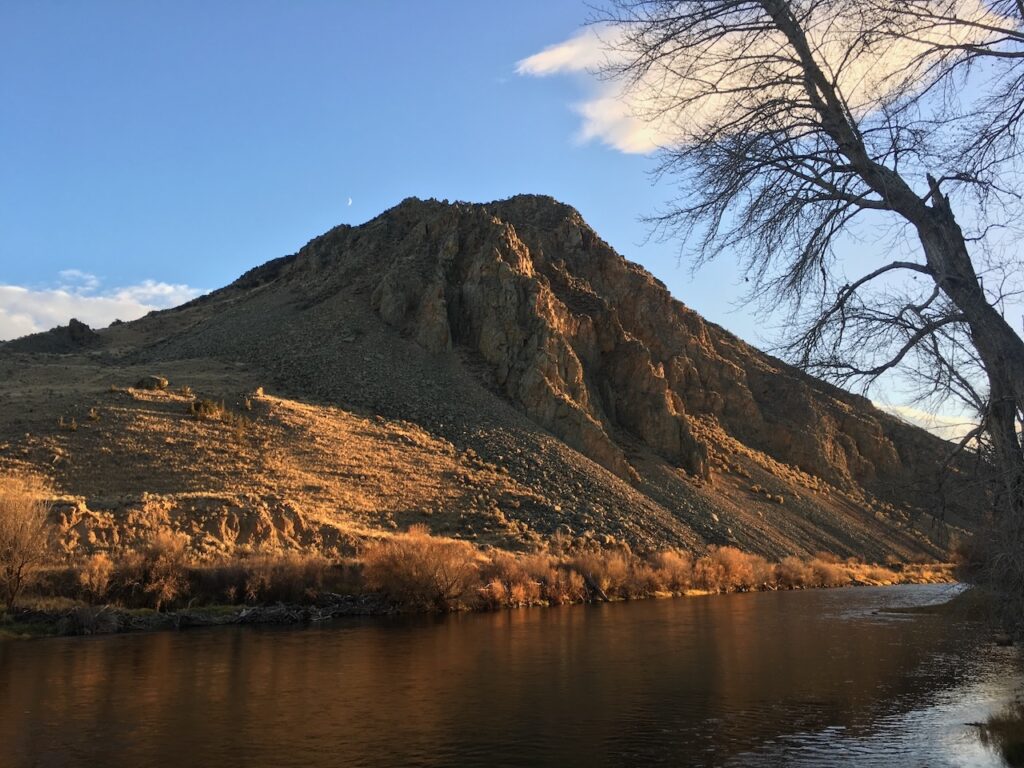
I decided to try for the fish working the eddy line out towards the middle of the river. If I hook one, I reasoned, I’d be able to play it close to the boat and not spook those upstream. I stood and fed out line, guessing the distance between me and the fish and laid down my first cast. A little short. I stripped off another three feet, picked up and cast again, working the extra line out. On my last back cast before laying the line on the water I snagged a tree behind me, high up the bank. Cave sniggered. Thankfully no one else witnessed my amateurishness, but I had to break the fly off and retie.
Confidence rattled, I next turned my attention to the feeders upstream, still rising in two feed lines about four feet apart. With nothing behind me to hinder my line this time, I cast under the bridge to the outer feed line. The fly landed clumsily in a cluster of leader and tippet, drifting down through the feed line unmolested. I waited a couple of minutes, and noticed that since my duff cast, no fish had risen again in the feed line.
“Didn’t like that,” Cave offered helpfully.
I thanked him for his powers of observation, and turned my attention to the inner line, which still showed regular dimples. This time my cast landed delicately about three feet above the main cluster of risers. Perfect. As I squinted into the glare of the morning sun, my fly was only visible when descending the back sides towards the troughs of the small waves. It disappeared from view in the glare. I saw a rise near where I thought my fly should be, and set. I felt a momentary pull on the other end, then nothing. All rising stopped.
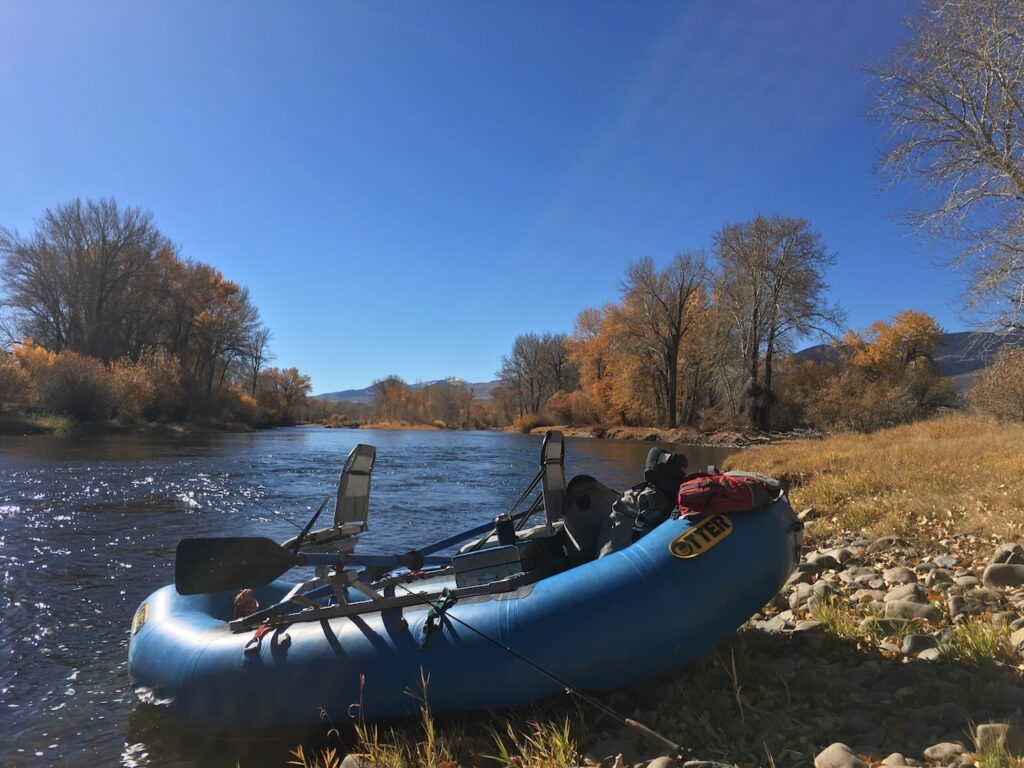
My mother had washed my mouth out with soap for language far milder than I unloaded to the heavens. Cave sniggered. Three casts, three screw ups, three different ways.
“Let’s wait a few minutes and see if there’s one fish in the river I haven’t managed to put down.”
I sat and reached for my beer. Across the river the countryside rose in steps, from floodplain to rolling golden hills that merged into fingers of green forest and finally, etched against sky and cloud, peaks of bare rock, grey and pointed. Water lapped gently against the hull of the boat. We finished our beer. The water beneath the bridge remained free of risers. Hauling up the anchor, the tourists floated downstream.


